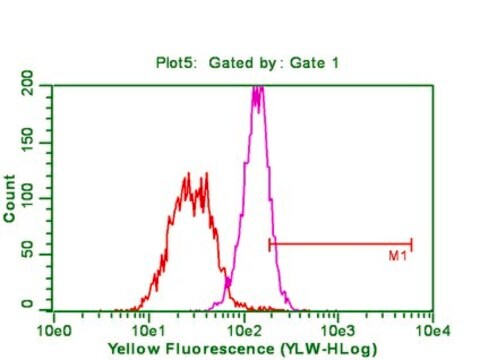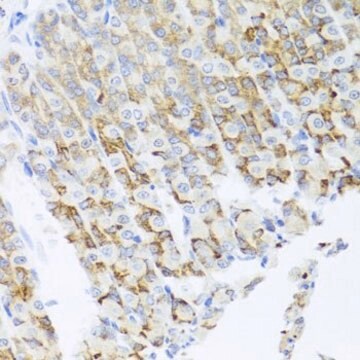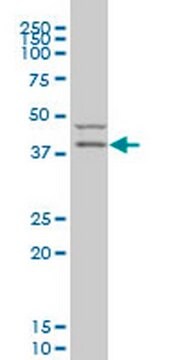07-1398
Anti-phospho-Akt (Thr308) Antibody
from rabbit
Synonym(s):
Protein kinase B, RAC-alpha serine/threonine-protein kinase, murine thymoma viral (v-akt) oncogene homolog-1, rac protein kinase alpha, v-akt murine thymoma viral oncogene homolog 1
About This Item
Recommended Products
biological source
rabbit
Quality Level
antibody form
affinity isolated antibody
antibody product type
primary antibodies
clone
polyclonal
purified by
affinity chromatography
species reactivity
mouse, canine
species reactivity (predicted by homology)
Xenopus (based on 100% sequence homology), rat (based on 100% sequence homology), human (based on 100% sequence homology), dog (based on 100% sequence homology), chicken (based on 100% sequence homology), bovine (based on 100% sequence homology)
technique(s)
immunohistochemistry: suitable (paraffin)
isotype
IgG
suitability
not suitable for Western blot
NCBI accession no.
UniProt accession no.
shipped in
wet ice
target post-translational modification
phosphorylation (pThr308)
Gene Information
bovine ... Akt1(280991)
human ... AKT1(207)
rat ... Akt1S1(292887)
General description
Immunogen
Application
Western Blot Analysis:
Not recommended for WB as it gives multiple bands. Please refer to 05-802R
Quality
Antibody diluted to 1:500, IHC-Select Detection with HRP-DAB.
Target description
Physical form
Storage and Stability
Handling Recommendations: Upon receipt, and prior to removing the cap, centrifuge the vial and gently mix the solution.
Other Notes
Not finding the right product?
Try our Product Selector Tool.
Storage Class
12 - Non Combustible Liquids
wgk_germany
WGK 1
flash_point_f
Not applicable
flash_point_c
Not applicable
Certificates of Analysis (COA)
Search for Certificates of Analysis (COA) by entering the products Lot/Batch Number. Lot and Batch Numbers can be found on a product’s label following the words ‘Lot’ or ‘Batch’.
Already Own This Product?
Find documentation for the products that you have recently purchased in the Document Library.
Our team of scientists has experience in all areas of research including Life Science, Material Science, Chemical Synthesis, Chromatography, Analytical and many others.
Contact Technical Service








